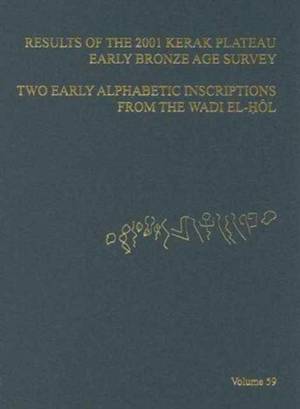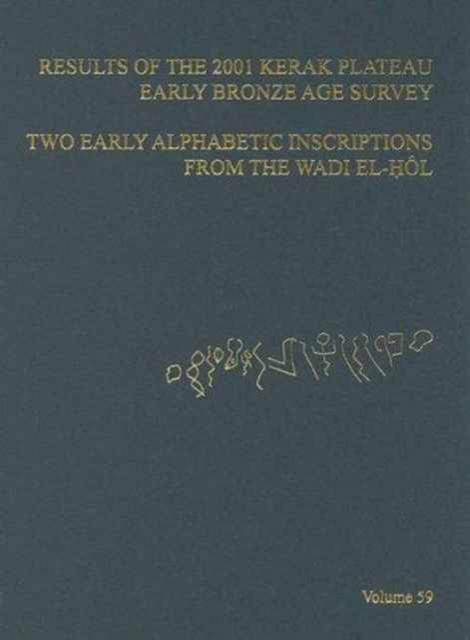
- Afhalen na 1 uur in een winkel met voorraad
- Gratis thuislevering in België vanaf € 30
- Ruim aanbod met 7 miljoen producten
- Afhalen na 1 uur in een winkel met voorraad
- Gratis thuislevering in België vanaf € 30
- Ruim aanbod met 7 miljoen producten
Asor Annual 59
Part I, Results of the 2001 Kerak Plateau Early Bronze Age Survey; Part II, Two Early Alphabetic Inscriptions from the Wadi El-Hol
Meredith S Chesson, John Coleman Darnell
€ 15,95
+ 31 punten
Omschrijving
Part I presents the results from the 2001 research project combining surface surveys and limited test excavations at eight Early Bronze Age (c. 3600-2000 BC) settlement sites identified in a previous survey by Miller (1991) on the Kerak Plateau. The team collected data to determine the suitability of these sites for a future, multi-year research project, and to assess the applicability of an alternative perspective for reconstructing the nature of the earliest walled towns in the southern Levant. Aside from documenting the state of preservation of these sites, the proposed research sought to evaluate propositions about (1) the nature of the chronological development of urbanism within the region, and (2) the relationship between environmental and ecological zones and the scale of urban settlements in the region. Includes 27 figures. Part II is the editio princeps of two early alphabetic inscriptions discovered by John and Deborah Darnell along the Farshut Road, Wadi el-Hol, near Luxor, Egypt. The work includes photographs, drawings and discussions of the inscriptions, together with a discussion of the source of the signs and significance of the find. The authors argue that the discovery of these inscriptions points to the origins of the alphabet in an Egyptian context as long ago as 2000 BC. Includes 22 figures and 13 plates.
Specificaties
Betrokkenen
- Auteur(s):
- Uitgeverij:
Inhoud
- Aantal bladzijden:
- 144
- Taal:
- Engels
- Reeks:
- Reeksnummer:
- nr. 59
Eigenschappen
- Productcode (EAN):
- 9780897570718
- Verschijningsdatum:
- 1/12/2005
- Uitvoering:
- Hardcover
- Formaat:
- Genaaid
- Afmetingen:
- 219 mm x 288 mm
- Gewicht:
- 639 g

Alleen bij Standaard Boekhandel
+ 31 punten op je klantenkaart van Standaard Boekhandel
Beoordelingen
We publiceren alleen reviews die voldoen aan de voorwaarden voor reviews. Bekijk onze voorwaarden voor reviews.










